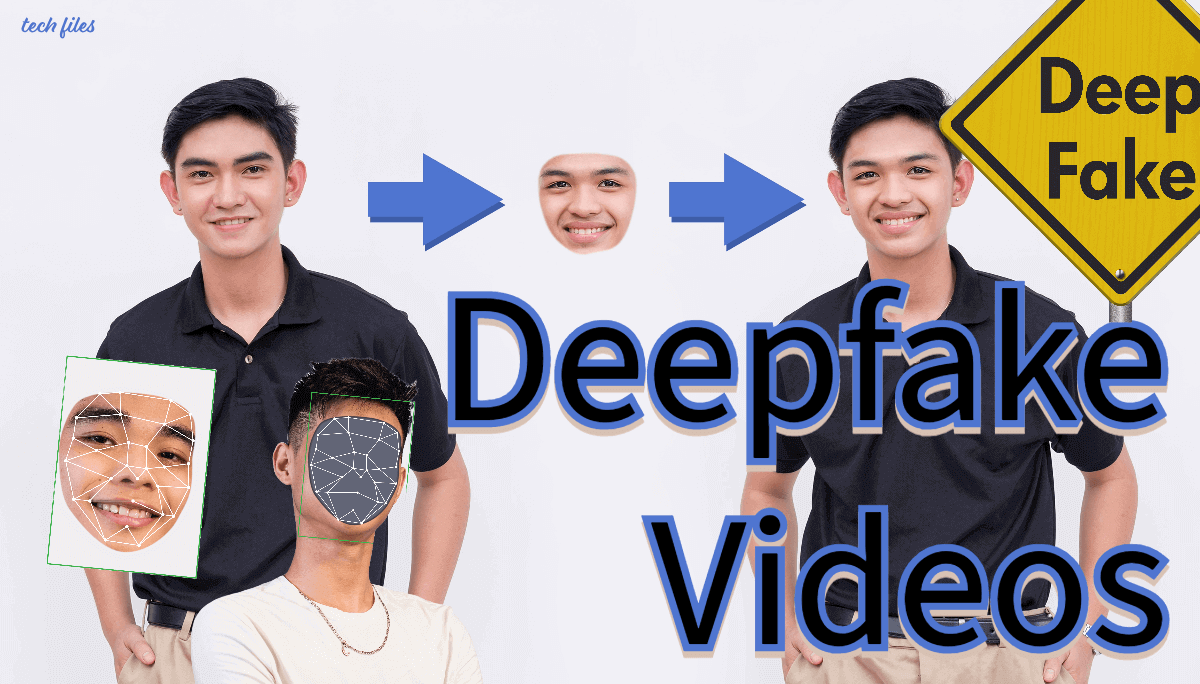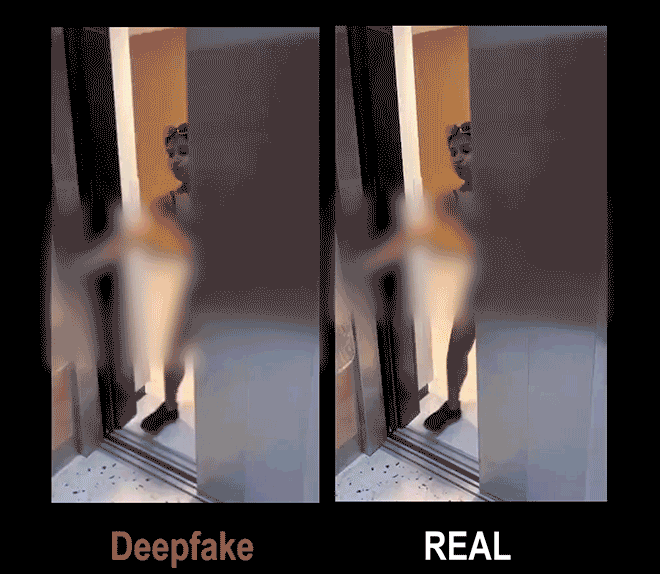Harnessing the Power of Deepfake Videos: Understanding the Advantages and How to Create Your Own

What are Deepfake videos?
Deepfake videos are a form of synthetic media that involves the use of artificial intelligence (AI) technology to manipulate and superimpose someone’s face onto another person’s body in a video. The term “deepfake” is derived from the combination of “deep learning” and “fake.” These videos are created using deep learning algorithms, which analyze and learn from large datasets of images and videos to generate realistic and convincing visual content.
Deepfake videos gained widespread attention in recent years due to their potential to deceive and manipulate viewers. They have been primarily used for entertainment purposes, such as creating humorous or satirical videos, but they also raise serious concerns regarding the ethical implications and potential misuse of this technology.
Advantages of using Deepfake videos
Despite the ethical concerns surrounding deepfake videos, there are several advantages to using this technology. One of the main advantages is its potential in the entertainment industry. Deepfake technology allows filmmakers and content creators to seamlessly incorporate the likeness of actors or historical figures into their productions, opening up new possibilities for storytelling and visual effects.
Additionally, deepfake videos can be used for educational purposes. By superimposing the face of a knowledgeable expert onto a video tutorial, for example, learners can have a more engaging and relatable learning experience. This can be particularly beneficial in fields such as medicine and engineering, where complex concepts can be simplified and explained through the use of deepfake videos.
Furthermore, deepfake videos have the potential to revolutionize the advertising and marketing industries. With the ability to create highly personalized and targeted advertisements, companies can deliver more engaging and relevant content to their target audience. This level of customization can lead to higher conversion rates and increased brand engagement.
Limitations and ethical concerns of Deepfake videos
While deepfake videos offer numerous advantages, they also come with notable limitations and ethical concerns. One major limitation is the potential for misuse and deception. Deepfakes can be used to spread false information, defame individuals, or manipulate public opinion. This raises serious concerns about the integrity of information and the potential for harm to individuals and society as a whole.
Another limitation of deepfake videos is the technical expertise required to create them. Despite the availability of user-friendly tools and websites, creating convincing and realistic deepfakes still requires a certain level of skill and knowledge in AI and video editing. This can limit the accessibility of deepfake technology to a select few individuals or organizations.
Ethically, the use of deepfake videos raises questions about consent and privacy. Using someone’s likeness without their permission can infringe upon their rights and potentially lead to negative consequences for the individuals involved. It is essential to have clear guidelines and regulations in place to ensure the responsible and ethical use of deepfake technology.
Recent examples of Deepfake videos
Over the past few years, there have been several notable examples of deepfake videos that have garnered significant attention. One example is the deepfake video of former President Barack Obama that was created by BuzzFeed in 2018. The video showcased the potential of deepfake technology by convincingly altering Obama’s facial expressions and voice to deliver a public service announcement about the dangers of deepfakes themselves.
Another prominent example is the deepfake video featuring actor Tom Cruise, which went viral on social media in 2021. The video, created by visual effects artist Chris Ume, showcased the uncanny ability of deepfake technology to replicate the likeness of a well-known celebrity. This video sparked a conversation about the potential dangers of deepfakes and the need for increased awareness and regulation.
These examples highlight both the impressive capabilities and the potential risks associated with deepfake videos. As the technology continues to advance, it is crucial to stay informed and educated about the implications and responsible use of deepfake videos.

Understanding the technology behind Deepfake videos
To fully grasp the concept of deepfake videos, it is essential to understand the technology that powers them. Deepfakes are created using deep learning algorithms, specifically a class of algorithms known as generative adversarial networks (GANs). GANs consist of two neural networks: a generator network and a discriminator network.
The generator network is responsible for creating the deepfake videos by generating synthetic images or videos based on the input data. It learns from a dataset of real images and videos to create realistic and convincing visual content. The discriminator network, on the other hand, acts as a judge and evaluates the authenticity of the generated content. The two networks work in tandem, with the generator network continually improving its output based on the feedback from the discriminator network.
This iterative process of training the deep learning model allows the generator network to gradually refine its output and create more realistic deepfake videos. By analyzing and learning from a large dataset of images and videos, the model can capture subtle facial expressions, gestures, and other unique characteristics that make the deepfake videos appear highly convincing.
Step-by-step procedure for creating your own Deepfake video
Creating your own deepfake video can be an exciting and creative endeavor. However, it requires careful attention to detail and adherence to ethical guidelines. Here is a step-by-step procedure to help you get started:
- Gather the necessary materials: To create a deepfake video, you will need a high-quality video of the person whose face you want to replace, as well as a dataset of images or videos to train the deep learning model.
- Choose a deepfake tool: There are several user-friendly deepfake tools available online, such as DeepFaceLab and Faceswap. Choose a tool that suits your skill level and requirements.
- Preprocess the data: Before training the deep learning model, you will need to preprocess the data by aligning the faces in the videos and removing any artifacts or inconsistencies.
- Train the model: Use the deepfake tool to train the deep learning model on the dataset of images or videos. This process may take several hours or even days, depending on the complexity of the model and the amount of data.
- Generate the deepfake video: Once the model is trained, you can use it to generate the deepfake video by inputting the source video and the target face. The tool will then superimpose the target face onto the source video, creating a deepfake video.
- Refine and edit: After generating the deepfake video, you can refine and edit it to enhance its quality and realism. This can involve adjusting the facial expressions, fine-tuning the lip movements, and adding additional visual effects if desired.
- Review and assess: Before sharing your deepfake video, it is crucial to review and assess its content and potential impact. Consider the ethical implications and ensure that the video is not misleading or harmful.
Websites and tools to make Deepfake videos
Creating deepfake videos requires specialized tools and software. Here are some popular websites and tools that can help you create your own deepfake videos:
- DeepFaceLab: DeepFaceLab is a powerful and widely used deepfake tool that provides advanced features for creating high-quality deepfake videos. It offers a user-friendly interface and detailed tutorials to guide beginners through the process.
- Faceswap: Faceswap is another popular deepfake tool that offers both a command-line interface and a graphical user interface. It provides a range of options for training and generating deepfake videos, along with a supportive community for assistance.
- Reface: Reface is a mobile application that allows users to create deepfake videos and GIFs using their smartphones. It offers a wide range of templates and effects to choose from, making it easy to create entertaining and shareable content.
- Wondershare Filmora: Filmora is a video editing software that includes deepfake features. It provides a user-friendly interface and a variety of editing tools to enhance the quality and realism of deepfake videos.
These websites and tools can serve as a starting point for creating your own deepfake videos. However, it is essential to use them responsibly and ethically, considering the potential implications and impact of the content you create.
Tips for creating convincing and realistic Deepfake videos
Creating convincing and realistic deepfake videos requires attention to detail and careful execution. Here are some tips to help you create high-quality deepfake videos:
- Choose appropriate source material: Select high-quality videos of the person whose face you want to replace. The better the source material, the more convincing the deepfake video will be.
- Align and preprocess the data: Before training the deep learning model, align the faces in the videos and preprocess the data to remove any artifacts or inconsistencies. This will improve the quality and accuracy of the deepfake videos.
- Train with diverse datasets: To create more realistic deepfake videos, train the model with diverse datasets that include a wide range of facial expressions, lighting conditions, and angles. This will improve the model’s ability to capture and replicate subtle nuances.
- Pay attention to details: Focus on replicating small details such as facial expressions, eye movements, and lip-syncing. These details can significantly impact the realism of the deepfake video.
- Consider context and lighting: Ensure that the lighting and context of the target face match the source video. Pay attention to shadows, reflections, and other environmental factors to create a seamless integration.
- Experiment and iterate: Creating high-quality deepfake videos requires practice and experimentation. Don’t be afraid to iterate and refine your approach to achieve the desired results.
By following these tips and continuously honing your skills, you can create deepfake videos that are convincing, realistic, and responsible.
How Deepfake videos are impacting various industries
The rise of deepfake videos has had a significant impact on various industries. Here are some examples of how deepfake videos are being utilized:
- Entertainment industry: Deepfake technology has opened up new possibilities in the entertainment industry. Filmmakers and content creators can now incorporate the likeness of actors or historical figures into their productions, enhancing storytelling and visual effects.
- Advertising and marketing: Deepfake videos have the potential to revolutionize the advertising and marketing industries. Companies can create highly personalized and targeted advertisements by superimposing the faces of celebrities or influencers, leading to increased brand engagement and conversion rates.
- Education and training: Deepfake videos can be used in education and training to create engaging and relatable learning experiences. By superimposing the face of a knowledgeable expert onto a video tutorial, learners can have a more immersive and effective learning experience.
- Journalism and media: Deepfake videos pose challenges to journalism and media organizations. The potential for manipulated videos can undermine the credibility of news sources and spread misinformation. Journalists and media professionals need to be vigilant in verifying the authenticity of videos and ensuring responsible reporting.
- Security and surveillance: Deepfake videos have implications for security and surveillance. The ability to create highly realistic videos can be used for malicious purposes, such as impersonating individuals or creating false evidence. This highlights the need for robust authentication and verification systems to combat deepfake technology’s potential misuse.
Conclusion: The future of Deepfake videos and the importance of responsible use
Deepfake videos have emerged as a powerful and potentially disruptive technology. While they offer numerous advantages in entertainment, education, and marketing, they also raise significant ethical concerns and potential risks. As the technology continues to evolve, it is crucial to approach deepfake videos with caution and responsibility.
The future of deepfake videos lies in striking a balance between innovation and ethical use. Clear guidelines and regulations should be established to prevent the misuse of deepfake technology and protect individuals’ rights. Additionally, public awareness and education about deepfake videos are essential to ensure that viewers can critically evaluate the authenticity of visual content.
By harnessing the power of deepfake videos responsibly, we can unlock their potential for positive impact while mitigating the risks. As with any emerging technology, the responsible use and ethical considerations surrounding deepfake videos will play a crucial role in shaping their future.













Sharing is caring!